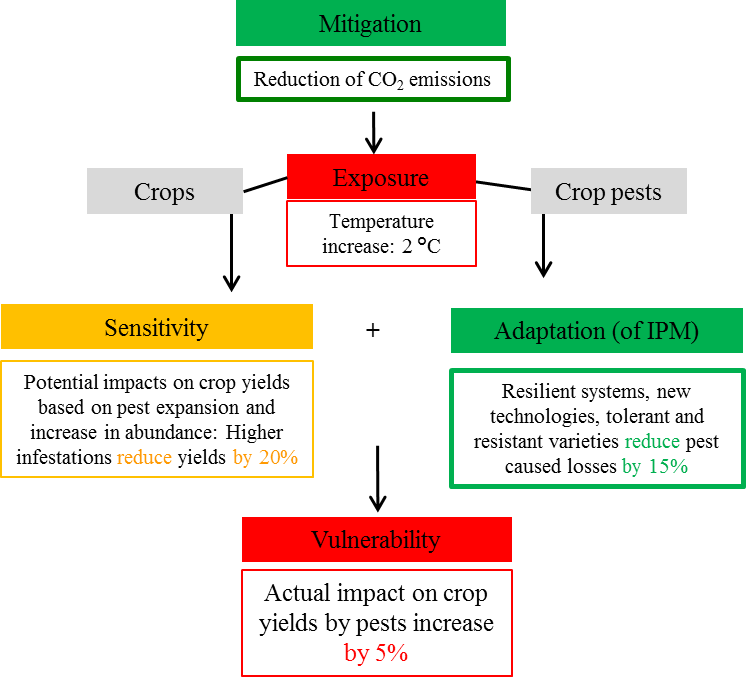Climate change will expose crops and pests to higher temperatures. Predictions until the year 2050 assume an increase of 2°–3°C, if CO2 emissions cannot be reduced (Fig. 1).

Higher temperatures will have different positive and negative effects on crops and yield potentials. Further, as we show in the different pest chapters, crops will be exposed to more pests through pest range expansions as well as higher pest abundance through an increase in pest cycles (generations) per cropping season and year. Higher pest infestations will lead to higher crop losses and increasing yield gaps. Adaptation of IPM will be the ultimate solution to reduce pest-related losses sustainably at farm level, thereby minimizing or fully avoiding the use of pesticides. The Pest Risk Atlas for Africa will support adaptation planning to understand in which countries and regions changes in pest distribution, occurrence, and abundance will likely occur based on changes in temperature. National quarantine systems can be reinforced and lists of potential new entry pests revised to reduce the probability of their invasion and spread. Resilient cropping systems better able to cope with extreme weather events and future pest risks, as well as new innovative methods of pest control are needed and be made available to farmers.
